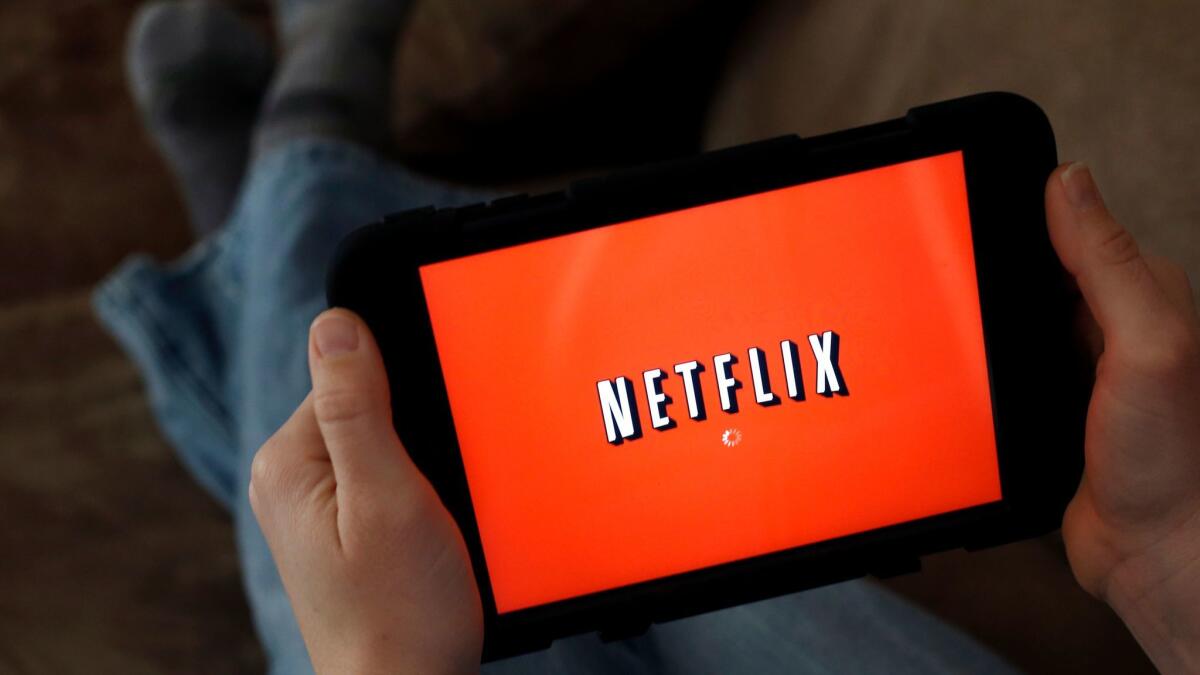How Netflix guesses what you want to watch

- Share via
Netflix Inc. wants subscribers to know it’s looking out for them.
For instance, the average Netflix subscriber might not guess that its dark superhero drama “Jessica Jones” might strike similar chords as the zany hijinks of “Unbreakable Kimmy Schmidt.” Netflix is happy to help you make the connection.
Much of the attention showered on the streaming-video giant in recent years has focused on its appetite for original content and for creators to produce it.
“We want to appeal to as many different people as possible, and appeal to the many moods that each person has,” said Netflix’s vice president of product innovation, Todd Yellin. “The more diverse our content, the more likely that someone, at their moment of truth about what they’re going to watch, will choose to go to Netflix.”
But the San Francisco company’s multibillion-dollar annual outlay for new programming leads to another challenge: helping each program get discovered by the subscribers most likely to enjoy it. Four out of five shows watched on Netflix were found by its subscribers thanks to recommendations the service offered them, Netflix said.
Those suggested new favorites are much more customized for each subscriber than might be evident from a glance at the Netflix home page.
Most every row of program suggestions (even generic-seeming categories such as “comedies” and “dramas”) is tailored for each subscriber, Yellin said. And how the rows are arranged vertically on the home page is a function of the subscriber’s demonstrated genre preferences.
“You might have ‘comedies’ as your fifth row,” said Yellin, “and for another person it might be 25th. And someone else might not get a comedy row at all.”
So your Netflix is different from everybody else’s. But where do these tips come from?
“It’s very important that the titles most relevant to each person bubble up to the top of the catalog,” Yellin said. “And we want those relevant titles to be diverse. We don’t want to make the amateur mistake of getting caught in an echo chamber, such as: Just because you watched one horror title, slapping in front of you nothing but more horror titles.”
Yellin likens the process of providing bespoke TV for each customer to a three-way collaboration.
First, a legion of Netflix “taggers” screens every program, tagging elements that compose it. This data is crunched and continuously refined by the company’s secret algorithm. Viewer habits gathered by Netflix from its 100 million accounts worldwide add more grist to the mill.
Thus can Netflix take a “gateway” show and point the viewer to unexpected or unknown fare with presumably similar appeal.
Consider “Ozark,” which viewers might be led to from any of several directions, Yellin explained.
“Ozark” is a recently released original drama series starring Jason Bateman as a money-laundering family man who’s seriously jammed up with the Mexican drug cartel he works for.
“We’ve found that people who tend to watch ‘Blacklist’ and ‘House of Cards’ tend to like ‘Ozark,’” Yellin said. “But another kind of person who will find he likes ‘Ozark’ is a fan of ‘Narcos’ and ‘El Chapo’ and other drug-cartel-oriented dramas and documentaries.”
But wait, there’s yet another “taste community” rallying to “Ozark,” said Yellin: fans of the 2015 film “The Big Short,” which deals with Wall Street dirty tricks, have been found to respond to the money monkeyshines that animate “Ozark.”
“It’s not like we could have guessed this ahead of time,” Yellin said. “We just track which shows tend to cluster together. Who would have thought that ‘Jessica Jones’ and ‘Kimmy Schmidt’ would cluster together?” As well as — no kidding — “Making a Murderer” and a John Mulaney stand-up concert.
More to Read
Inside the business of entertainment
The Wide Shot brings you news, analysis and insights on everything from streaming wars to production — and what it all means for the future.
You may occasionally receive promotional content from the Los Angeles Times.










